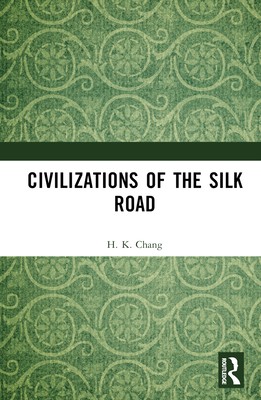
- We will send in 10–14 business days.
- SAVE -10% with code: EXTRA
Reviews
Description
This book describes the interactions between various civilizations and societies along the Silk Road between 500 BCE and 1500 CE, the period from the first encounters of the ancient Greek and Persian civilizations to the time when maritime exchanges between Europe and Asia exceeded those on land.
Starting with the genesis and features of civilizations, the book focuses on the history and exchange of different cultures along the Silk Road: Zhang Qian's successful pioneering feat which inaugurated the opening stretch of the Silk Road, the origins and dissemination of Zoroastrianism, Buddhism, Christianity, Manichaeism, Nestorian-Christianity and Islam, the westward spread of papermaking and printing, as well as the long-distance exchanges of scripts and spoken language, music, architecture, painting, and sculpture via the Silk Road. It also outlines the historically significant migrations of various peoples from east to west, such as the Xiongnu, Yuezhi, Han, Qiang, Hephthalites, Turkic groups, Uighurs, Mongols, and Xibe.
The author has interwoven facts, anecdotes and his own experiences throughout the book, making it an interesting history reader and cultural primer. This book thus will be an essential read to students and scholars of Eurasian Studies, Chinese History and those who are interested in the history of the Silk Road in general.
EXTRA 10 % discount with code: EXTRA
The promotion ends in 17d.19:54:51
The discount code is valid when purchasing from 10 €. Discounts do not stack.
- Author: H K Chang
- Publisher: Routledge
- ISBN-10: 1032439998
- ISBN-13: 9781032439990
- Format: 15.6 x 23.4 x 1.8 cm, hardcover
- Language: English English
This book describes the interactions between various civilizations and societies along the Silk Road between 500 BCE and 1500 CE, the period from the first encounters of the ancient Greek and Persian civilizations to the time when maritime exchanges between Europe and Asia exceeded those on land.
Starting with the genesis and features of civilizations, the book focuses on the history and exchange of different cultures along the Silk Road: Zhang Qian's successful pioneering feat which inaugurated the opening stretch of the Silk Road, the origins and dissemination of Zoroastrianism, Buddhism, Christianity, Manichaeism, Nestorian-Christianity and Islam, the westward spread of papermaking and printing, as well as the long-distance exchanges of scripts and spoken language, music, architecture, painting, and sculpture via the Silk Road. It also outlines the historically significant migrations of various peoples from east to west, such as the Xiongnu, Yuezhi, Han, Qiang, Hephthalites, Turkic groups, Uighurs, Mongols, and Xibe.
The author has interwoven facts, anecdotes and his own experiences throughout the book, making it an interesting history reader and cultural primer. This book thus will be an essential read to students and scholars of Eurasian Studies, Chinese History and those who are interested in the history of the Silk Road in general.


Reviews